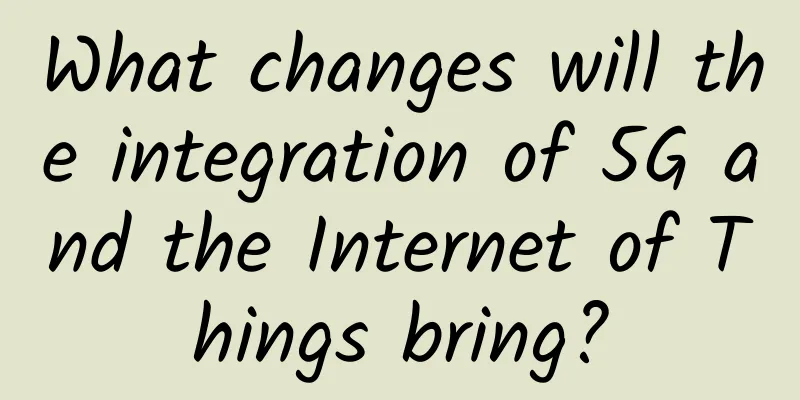11 key visualizations for SD-WAN success

|
SD-WAN deployments are quickly becoming a major focus for network operations (NetOps) teams around the world and are changing the face of networking. In fact, Gartner estimates that by 2021, nearly two-thirds of enterprises will have adopted SD-WAN technology. For example, Cisco recently upgraded its millionth router with SD-WAN software. Now, NetOps teams are tasked with evaluating redesign and migration paths from on-premises licensing and configuration management to Cisco's SD-WAN cloud service.
As enterprises focus on building out new SD-WAN infrastructures like these over the next few years, NetOps teams need to be able to visualize these new, complex networks and how they impact and relate to traditional IT environments. Here are 11 key visualizations that every NetOps team can benefit from when planning, deploying, validating, and managing their SD-WAN projects. Enterprise Visualization NetOps teams need to understand every corner of the organization. This means end-to-end visibility across the entire organization - from endpoints, applications and website tunnels, VPNs, and service provider transmission SLA performance - all in one understandable and action-oriented view. With this insight, administrators can gain real-time situational awareness and easily perform necessary network tuning and problem solving. SD-WAN Topology View - Tunnel Performance The active topology map should provide a hierarchical set of filtered views to isolate applications, VPNs, and policies in real time. These types of views allow NetOps teams to monitor key performance indicators and SLA KPIs and help you understand whether they are staying within the perimeter or are fluctuating between cloud applications and applications traversing service provider connections. Site current activity alerts Alerts, or alerts, are critical to determining when network conditions change from a baseline. In modern NPMD platforms, alerts are overlaid on top of topology, site, and summary views that notify across teams, so you can leverage the same information to participate in incident response. These alerts should show the severity of the problem, the trigger or cause, and semantic information such as location, time, and description to automatically create and distribute service management tickets using popular enterprise services such as ServiceNow or PagerDuty. Proactive insights through machine learning Machine learning (ML) and advanced analytics are rapidly advancing in modeling predictive conditions to avoid events such as service-impacting delays. Knowing ahead of time about potential or predicted service performance issues and their impact allows for necessary adjustments and prevention of issues before they impact end users and the business. Application Report With user experience measured in seconds for response times and quality based on blurry video or dropped phone calls, NetOps must be able to debug issues quickly. Viewing application needs across services across the SD-WAN enables everything from status summaries to bandwidth consumption and quality of service policies for allocation. All of these details allow NetOps to manage and adjust network resources to meet the needs of customers, partners, and employees. Traffic performance view (audio/video) When policies change — and they always do — it’s important to perform path analysis. Some of the most useful SD-WAN visualizations show detailed path analysis that can help IT validate policy changes at scale and understand application path handoffs. As part of the ongoing management of SD-WAN deployments, NetOps teams also need to be able to visualize site-to-site tunnel performance in relation to service providers and policy thresholds. Service Provider Performance View When designing an SD-WAN, you can have several to many service provider agreements. Being able to analyze the performance, utilization, and paths associated with each service is critical to a successful deployment. IT departments need visibility that allows them to understand which telco infrastructure path an application should take, evaluate how SD-WAN enabled vs. non-SD-WAN traffic should be handled during deployment, and more. Site View Site views are essential and actionable for gaining visibility into specific sites and better understanding and managing data interconnects and service provider performance. Site-to-site visualization Having an application policy site-to-site view that connects multiple data sets to show overlay fabric performance is key to SD-WAN deployments. By correlating applications and their assigned virtual private network (VPN) and DSCP class of service marking information with service provider performance between site pairs, you can validate the SLA performance of the path for situational awareness and problem resolution. Device View When managing performance or troubleshooting SD-WAN, IT needs detailed visibility into device performance. These teams need to be able to assess each site and drill down into individual devices. This enables them to successfully validate application paths and service VPN topologies, as well as the ability to view policy assignments and performance (e.g., tunnel overlay, bandwidth, SLA class processing, etc.). Packet-level analysis Complex network problems or serious security issues require detailed packet decoding. Having packet capture and analysis is critical for NetOps teams to be able to dig deep, find root cause, troubleshoot, and resolve issues quickly and reliably. Original link: https://www.networkcomputing.com/networking/11-critical-visualizations-sd-wan-success/114761690 |
<<: SD-WAN vs. VPN: How Do They Differ?
>>: 5G traffic charges will not hurt operators to make money in a roundabout way
Recommend
Ministry of Industry and Information Technology: A number of key 5G technologies for specific needs of the industrial Internet will be achieved in 2022
Recently, the Ministry of Industry and Informatio...
Where does the strength of 5G factories that “take over” 5G+Industrial Internet come from?
In order to accelerate the industry's quality...
To promote the construction of "One-stop service", Foxit Kunpeng helps Shanghai Housing and Urban-Rural Development Commission launch OFD version of electronic certificates
Recently, the Shanghai Municipal Housing and Urba...
Why are the salaries of network engineers so different?
What are the salaries of network engineers? In fa...
Five-minute technology talk | The next milestone in the 5G era: 5.5G
The 5G communication network has the characterist...
Sharktech: $99/month-2*E5-2670V2/32G memory/500G SSD disk/1Gbps unlimited traffic/Los Angeles data center
Sharktech is a long-established DC merchant in th...
Looking Ahead to 2020: 8 Enterprise Technologies That Will Be Impactful
As 2019 comes to an end, we try to predict which ...
State management expert: Cookies and Session
1. Introduction Hello everyone, I am Xiao❤, a 985...
Understand the latest development trends of the 5G terminal industry in one article
[[382434]] Since the Ministry of Industry and Inf...
iWebFusion high-end servers start from $49/month, 4-40 core CPU, 384G memory, NVMe hard drive, 1-10G bandwidth, multiple computer rooms in Los Angeles and other places
We often share the VPS hosting information provid...
Deepin Technology participated in the national highway video networking work research meeting
On November 28, 2019, in order to accelerate the ...
GSMA: Global 5G connections will reach 1.8 billion by 2025
According to a new study from GSMA, global 5G con...
10gbiz: Silicon Valley dedicated server 20% off, starting from $24/month, optional CN2 line
10gbiz has just launched a promotion for two dedi...
A Five-Star End-User Experience Requires Unified Digital Experience Management
Introduction To deliver a five-star digital exper...
Omdia Viewpoint: CNF is key for telecom operators to realize the promise of 5G
Telecom operators are investing in operator softw...









